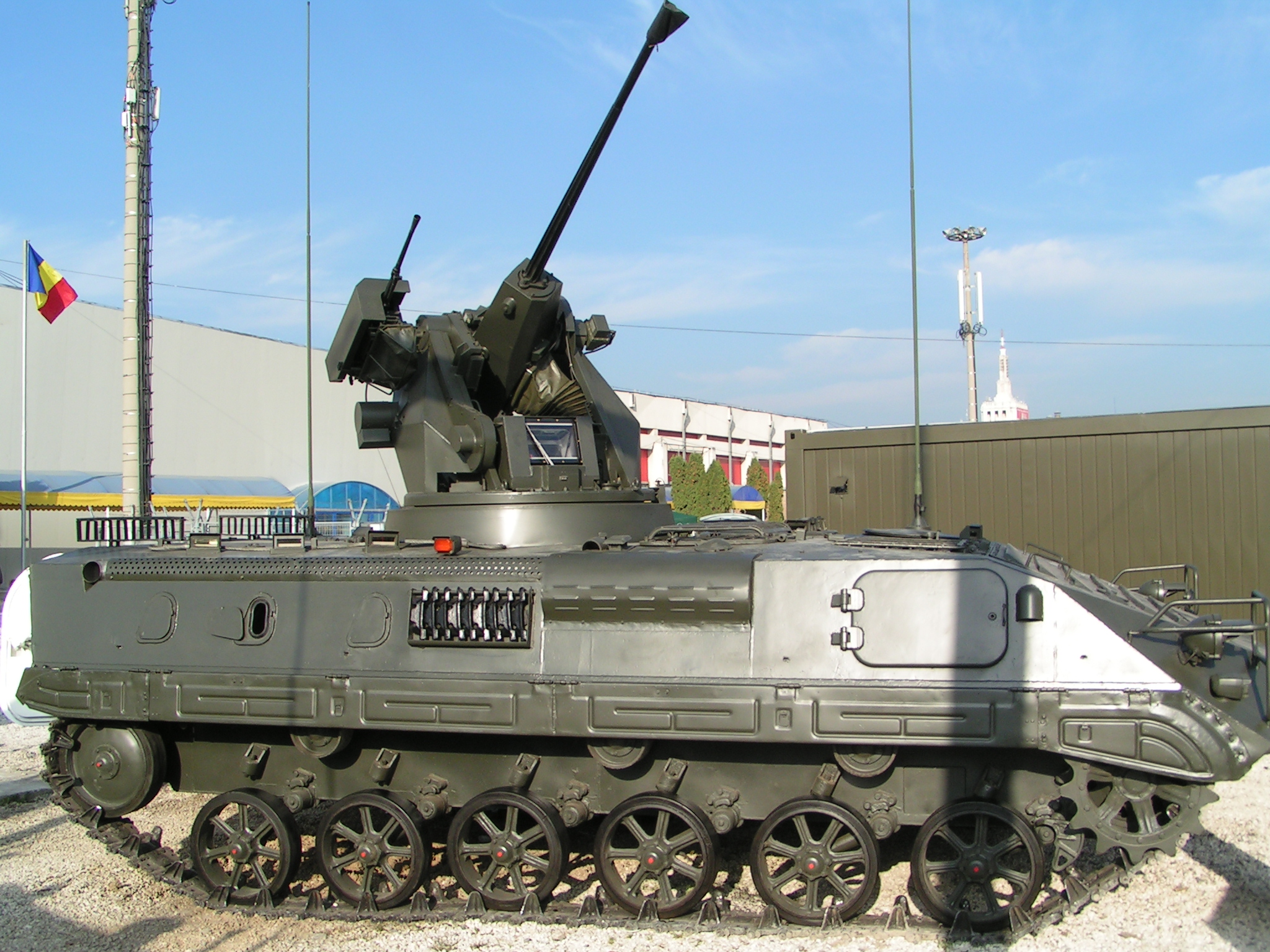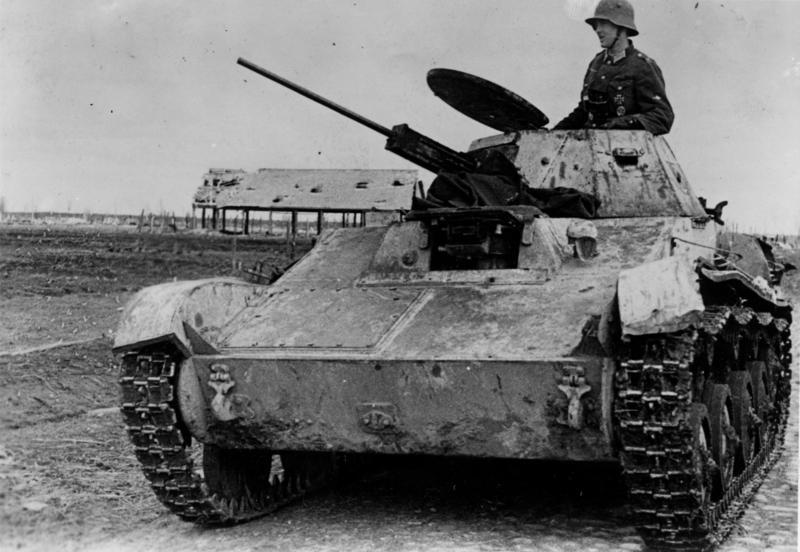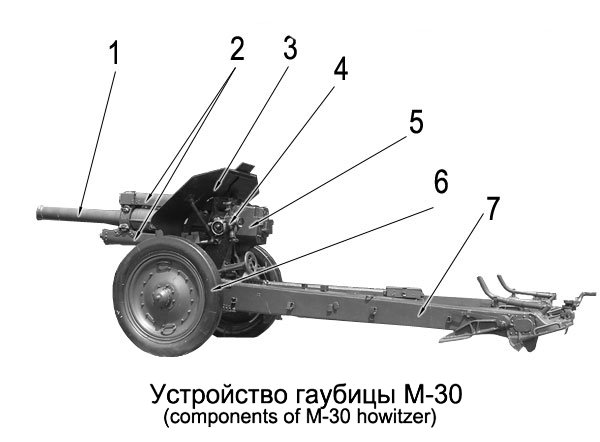|
SU-76
The SU-76 ('' Samokhodnaya Ustanovka 76'') was a Soviet light self-propelled gun used during and after World War II. The SU-76 was based on a lengthened version of the T-70 light tank chassis and armed with the 76 mm divisional gun M1942 (ZiS-3). Its quite simple construction and multipurpose combat role made it the second most produced Soviet armoured fighting vehicle of World War II, after the T-34 medium tank. History Design of the SU-76 began in November 1942, when the State Defense Committee ordered the construction of infantry support self-propelled guns armed with the ZiS-3 76.2 mm anti-tank gun and the M-30 122 mm howitzer. The T-70 chassis was chosen for mounting the ZiS-3 gun, and was lengthened, adding one road wheel per side, to facilitate better gun mounting. The vehicle was not completely enclosed by armour, the rear roof and upper rear side exposed. The power-plant setup installed in the first mass-produced SU-76s was unreliable. Two GAZ-202 automobi ... [...More Info...] [...Related Items...] OR: [Wikipedia] [Google] [Baidu] |
ZSU-37
ZSU-37 was a Soviet-made, light, self-propelled anti-aircraft gun (SPAAG), developed by the end of 1943 and produced at Works No. 40 in Mytishchi. It was the first Soviet series-produced tracked SPAAG. ZSU stands for Zenitnaya Samokhodnaya Ustanovka (russian: Зенитная Самоходная Установка), meaning "anti-aircraft self-propelled mount". History Soviet engineers carried out some early experiments with tracked SPAAGs before and during World War II, including a modification of the T-70 light tank, resulting in the experimental T-90 SPAAG which was armed with two 12.7 mm DShKT heavy machine guns (the prototype was built in November 1942 by GAZ). The T-70 light tank would eventually be further developed into the SU-76 light self-propelled gun chassis, which in turn was to become the base for the ZSU-37 SPAAG using M1939 anti-aircraft gun. It was decided to use the chassis of the SU-76M in order to speed up and cheapen the production of the much n ... [...More Info...] [...Related Items...] OR: [Wikipedia] [Google] [Baidu] |
Panzer III
The ''Panzerkampfwagen III'', commonly known as the Panzer III, was a medium tank developed in the 1930s by Germany, and was used extensively in World War II. The official German ordnance designation was Sd.Kfz. 141. It was intended to fight other armoured fighting vehicles and serve alongside and support the similar Panzer IV, which was originally designed for infantry support. However, as the Germans faced the formidable T-34, more powerful anti-tank guns were needed, and since the Panzer IV had more development potential with a larger turret ring, it was redesigned to mount the long-barrelled 7.5 cm KwK 40 gun. The Panzer III effectively swapped roles with the Panzer IV, as from 1942 the last version of the Panzer III mounted the 7.5 cm KwK 37 L/24 that was better suited for infantry support. Production of the Panzer III ceased in 1943. Nevertheless, the Panzer III's capable chassis provided hulls for the Sturmgeschütz III assault gun until the end of the war. Developm ... [...More Info...] [...Related Items...] OR: [Wikipedia] [Google] [Baidu] |
T-70
The T-70 was a light tank used by the Red Army during World War II, replacing both the T-60 scout tank for reconnaissance and the T-50 light infantry tank for infantry support. The T-80 light tank was a more advanced version of the T-70 with a two-man turret—it was produced only in very small numbers when light tank production was abandoned. The T-90 self-propelled anti-aircraft gun was a prototype vehicle with twin machine guns, based on the T-70 chassis. The T-70 was armed with a 45-mm L/46 gun Model 38 with forty-five rounds carried, and a coaxial 7.62-mm DT machine gun. The tank was operated by a driver and a commander who loaded and fired the gun. Armour thickness on the turret front was 60 mm, turret sides and rear: 35 mm, hull front and sides: 45 mm, roof and bottom: 10 mm. Production history By 1942, light tanks were considered inadequate by the Red Army, unable to keep up with the T-34 medium tank and unable to penetrate the armour of m ... [...More Info...] [...Related Items...] OR: [Wikipedia] [Google] [Baidu] |
T-34
The T-34 is a Soviet medium tank introduced in 1940. When introduced its 76.2 mm (3 in) tank gun was less powerful than its contemporaries while its 60-degree sloped armour provided good protection against anti-tank weapons. The Christie suspension was inherited from the design of American J. Walter Christie's M1928 tank, versions of which were sold turret-less to the Red Army and documented as "farm tractors", after being rejected by the U.S. Army. The T-34 had a profound effect on the conflict on the Eastern Front in the Second World War, and had a short lasting impact on tank design. After the Germans encountered the tank in 1941 during Operation Barbarossa, German general Paul Ludwig Ewald von Kleist called it "the finest tank in the world" and Heinz Guderian affirmed the T-34's "vast superiority" over German tanks. Alfred Jodl, chief of operations staff of the German armed forces noted in his war diary "the surprise at this new and thus unknown ''wunder''-armame ... [...More Info...] [...Related Items...] OR: [Wikipedia] [Google] [Baidu] |
76 Mm Divisional Gun M1942 (ZiS-3)
The 76-mm divisional gun M1942 (ZiS-3) (russian: 76-мм дивизионная пушка обр. 1942 г. (ЗиС-3)) (GRAU index: 52-P-354U) was a Soviet 76.2 mm divisional field gun used during World War II. ''ZiS'' was a factory designation and stood for ''Zavod imeni Stalina'' ("factory named after Stalin"), the honorific title of Artillery Factory No. 92, which first constructed this gun. History Artillery Factory No. 92 began designing the ZiS-3 at the end of 1940. The ZiS-3 combined the light carriage from the 57 mm ZiS-2 anti-tank gun and the powerful 76.2 mm barrel from the F-22USV, the previous divisional field gun. The addition of a muzzle brake reduced recoil and prevented damage to the light carriage upon firing. Producing a ZiS-3 cost only a third of the time and two-thirds of the money of a F-22USV by making greater use of casting, stamping and welding. V. G. Grabin, the chief designer of Soviet medium caliber guns, initiated the gun's develo ... [...More Info...] [...Related Items...] OR: [Wikipedia] [Google] [Baidu] |
Semyon Alexandrovich Ginzburg
Semyon Alexandrovich Ginzburg () (1900–1943) was a Soviet tank designer. He enrolled in business school in 1918, but then volunteered for the Red Army in 1919 and served in the light artillery squadron of the 3rd Rifle Division. After the division had retreated to Voronezh, Ginzburg enrolled in the Military Academy of the Strategic Missile Forces and graduated in 1920. He was appointed as a platoon commander in the 52nd Rifle Division and fought at Kakhovka and in Crimea. He continued his studies at the Dzerzhinsky Military Technology Academy in 1926 and graduated in 1929 after specializing in tank designs. He was one of the earliest tank designers in the Soviet Union who expressly studied to become one. He worked in the GKB (the main design bureau) and in the KB-3 in Moscow. In 1930 he was a member of the Soviet purchasing committee in Great Britain that prepared buying a license for the Vickers 6-Ton tank. Ginzburg then headed the OKMO experimental group in Leningrad prep ... [...More Info...] [...Related Items...] OR: [Wikipedia] [Google] [Baidu] |
MLVM
MLVM ( ro, Mașina de Luptă a Vânătorilor de Munte, meaning "infantry fighting vehicle of vânători de munte") is a Romanian armoured personnel carrier. The vehicle was designed and used as an infantry fighting vehicle for the ''vânători de munte'' units of the Romanian Army, though technically it is a tracked armoured personnel carrier according to UN classification because of its light armor and armament. Description MLVM is a specialized vehicle designed breasted mountain. The hull is inspired from SU-76 tank destroyer but is substantially modified for rough terrain. The turret is the same as that installed on the Romanian TAB-71M (8 × 8) APC. This turret is recognisable by the large day sight mounted on the left side, which is provided with a protective cage.. The vehicle has been designed specifically to be used in mountainous areas. Armament consists of a heavy machine gun KPVT 14.5 mm caliber, and a co-axial PKT machine gun 7.62 mm; The hull is made of ... [...More Info...] [...Related Items...] OR: [Wikipedia] [Google] [Baidu] |
T-60
The T-60 scout tank was a light tank produced by the Soviet Union from 1941 to 1942. During this period, 6,292 units were built. The tank was designed to replace the obsolete T-38 amphibious scout tank and saw action during World War II. The Kingdom of Romania used the T-60 chassis to build some locally-designed tank destroyers. Design Nicholas Astrov's design team at Moscow Factory No. 37 was assigned the task of designing amphibious and non-amphibious scout tanks in 1938. They produced the T-30A and T-30B prototypes. The former was to be manufactured as the T-40 amphibious tank starting in 1940. The T-30B prototype, sharing the T-40's chassis but simpler in construction and with heavier armour, was accepted as the tank that is often known as T-60 scout tank, but it was very different from actual T-60 (often referred as "T-40" T-60/T-30). Development of the T-60 began in the first days of the German invasion. The new tank was to be a stopgap measure to restock the heavy ... [...More Info...] [...Related Items...] OR: [Wikipedia] [Google] [Baidu] |
122 Mm Howitzer M1938 (M-30)
The 122 mm howitzer M1938 (M-30) (GRAU index: 52-G-463) was a Soviet 121.92 mm (4.8 inch) howitzer. The weapon was developed by the design bureau of Motovilikha Plants, headed by F. F. Petrov, in the late 1930s, and was in production from 1939 to 1955. The M-30 saw action in World War II, mainly as a divisional artillery piece of the Red Army (RKKA). Captured guns were also employed later in the conflict by the German Wehrmacht and the Finnish Army. Post World War II the M-30 saw combat in numerous conflicts of the mid- to late twentieth century in service of other countries' armies, notably in the Middle East. Development In 1930 Red Army (RKKA) authorities started to look for a new divisional-level howitzer to replace the pre-World War I 122 mm howitzer M1909 and 122 mm howitzer M1910. Although both pieces were eventually modernized, resulting in the 122-mm howitzer M1909/37 and the 122-mm howitzer M1910/30 respectively, these upgrades did not address some short ... [...More Info...] [...Related Items...] OR: [Wikipedia] [Google] [Baidu] |
NIIDAR
The NIIDAR company, the ''Scientific and Research Institute for Long-Distance Radio Communications'' (russian: Научно-исследовательский институт дальней радиосвязи) is a Russian manufacturer of radar systems. History It was established in 1916 as an automobile repairs workshop, to repair vehicles damaged during World War I. After 1939 it became known as the "Plant No. 37 named after Sergo Ordzhonikidze". In the 1930s and 1940s, the plant built a number of light tanks, including the T-37A, T-38, T-40, T-60 The T-60 scout tank was a light tank produced by the Soviet Union from 1941 to 1942. During this period, 6,292 units were built. The tank was designed to replace the obsolete T-38 amphibious scout tank and saw action during World War II. The Ki .... It developed a number of radars from 1949 to 1959 in co-operation with the NII-20 Lianozovo Electromechanical Plant. Products Unlike the NNIIRT, this design bureau focused on highe ... [...More Info...] [...Related Items...] OR: [Wikipedia] [Google] [Baidu] |
Battle Of Stalingrad
The Battle of Stalingrad (23 August 19422 February 1943) was a major battle on the Eastern Front of World War II where Nazi Germany and its allies unsuccessfully fought the Soviet Union for control of the city of Stalingrad (later renamed to Volgograd) in Southern Russia. The battle was marked by fierce close-quarters combat and direct assaults on civilians in air raids, with the battle epitomizing urban warfare. The Battle of Stalingrad was the deadliest battle to take place during the Second World War and is one of the bloodiest battles in the history of warfare, with an estimated 2 million total casualties. Today, the Battle of Stalingrad is universally regarded as the turning point in the European Theatre of war, as it forced the '' Oberkommando der Wehrmacht'' (German High Command) to withdraw considerable military forces from other areas in occupied Europe to replace German losses on the Eastern Front, ending with the rout of the six field armies of Ar ... [...More Info...] [...Related Items...] OR: [Wikipedia] [Google] [Baidu] |






